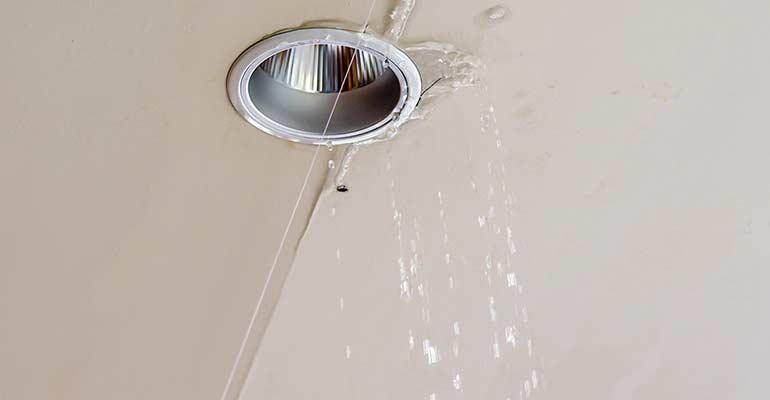Discover the Key Factors Leading To Water Drips Within Your Residence
Discover the Key Factors Leading To Water Drips Within Your Residence
Blog Article
In this article below you can discover additional professional news related to Common Water Leaks In House.

Leakages not just trigger waste of water yet can also create unnecessary damages to your home as well as advertise undesirable organic growth. Unfortunately, water leaks might go unnoticed considering that the majority of the pipework in our residence is hidden. By looking and recognizing for daily scenarios that trigger leaks, you can safeguard your home from future leakages and unneeded damages. Today, we will check out 6 leakage triggers that might be causing your pipelines to trickle.
Instant temperature level modifications.
Extreme temperature adjustments in our pipes can create them to expand as well as contract unexpectedly. This development as well as contraction may create fractures in the pipelines, specifically if the temperature level are listed below cold.
Rusty water supply
This may be the reason of discoloration or warping on your water pipes. If our plumbing system is old, consider replacing the pipes since they are at a greater danger of deterioration than the more recent models.
Faulty Pipe Joints
The factor at which your pipelines connect is frequently the weakest link in the waterline. Pipeline joints can wear away with time, resulting in water leaks. The majority of pipe joints are not conveniently visible. If you have loud pipes that make ticking or banging noises, especially when the warm water is turned on, your pipeline joints are probably under a lot of pressure. It is suggested to have your plumber inspect your system yearly.
Intruding origins
Many water leakages start outside the residence instead than inside it. You may observe damp spots or sinkholes in your yard, and also that may suggest that tree origins are attacking water lines creating water to leak out.
Poor Water Connectors
Sometimes, a leak can be caused by loosened tubes as well as pipes that supply your devices. Typically, shifting is what causes the loosened water Links. You could find in the case of a washing device, a pipe may spring a leakage as a result of shaking throughout the spin cycle. In case of a water links leak, you might discover water running straight from the supply line or puddles around your appliances.
Obstructed Drains
Blocked drains pipes could be irritating and inconveniencing, but they can in some cases wind up causing an overflow resulting in rupture pipelines. Maintain getting rid of any kind of materials that may decrease your drains pipes that can clog them to stay clear of such hassles.
All the above are sources of leaks but not all water leaks result from plumbing leakages; some leakages might come from roofing system leakages. All leaks should be fixed quickly to stay clear of water damage.
Leakages not just create waste of water yet can likewise trigger unneeded damage to your house and also promote undesirable organic growth. By understanding and also looking for day-to-day situations that cause leaks, you can secure your home from future leakages and unneeded damages. Today, we will look at six leakage causes that might be triggering your pipelines to trickle.
At times, a leakage can be created by loosened hoses and also pipelines that provide your appliances. In situation of a water connections leak, you may see water running directly from the supply line or pools around your devices.
How To Check For Water Leak In Your Home
How To Check for Leaks
The average household's leaks can account for nearly 10,000 gallons of water wasted every year and ten percent of homes have leaks that waste 90 gallons or more per day. Common types of leaks found in the home are worn toilet flappers, dripping faucets, and other leaking valves. These types of leaks are often easy to fix, requiring only a few tools and hardware that can pay for themselves in water savings. Fixing easily corrected household water leaks can save homeowners about 10 percent on their water bills.
To check for leaks in your home, you first need to determine whether you're wasting water and then identify the source of the leak. Here are some tips for finding leaks:
Take a look at your water usage during a colder month, such as January or February. If a family of four exceeds 12,000 gallons per month, there are serious leaks.
Check your water meter before and after a two-hour period when no water is being used. If the meter changes at all, you probably have a leak.
Identify toilet leaks by placing a drop of food coloring in the toilet tank. If any color shows up in the bowl after 10 minutes, you have a leak. (Be sure to flush immediately after the experiment to avoid staining the tank.)
Examine faucet gaskets and pipe fittings for any water on the outside of the pipe to check for surface leaks.
Undetected water leaks can happen without the home or business owner even realizing. If you suspect a water leak, but not able to find the source. It is time to contact a professional water leak detection service, The Leak Doctor.
How To Find a Water Leak In Your Home
https://www.leakdoctor.com/blog/How-To-Check-For-Water-Leak-In-Your-Home_AE197.html

As an avid reader about Common Water Leaks In House, I imagined sharing that piece of content was beneficial. Do you know about somebody who is interested in the topic? Do not hesitate to share it. Thank you for taking the time to read it.
Instant fix? Dial! Report this page